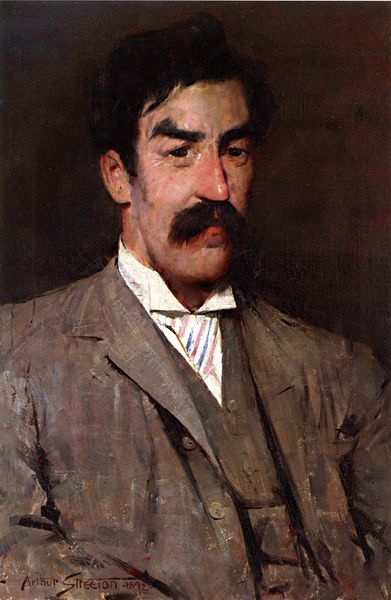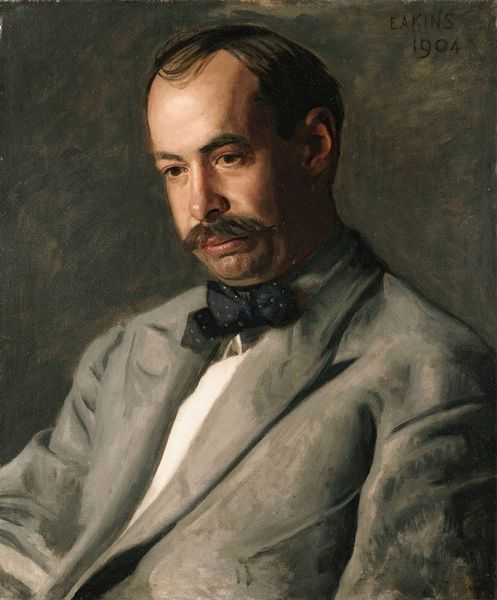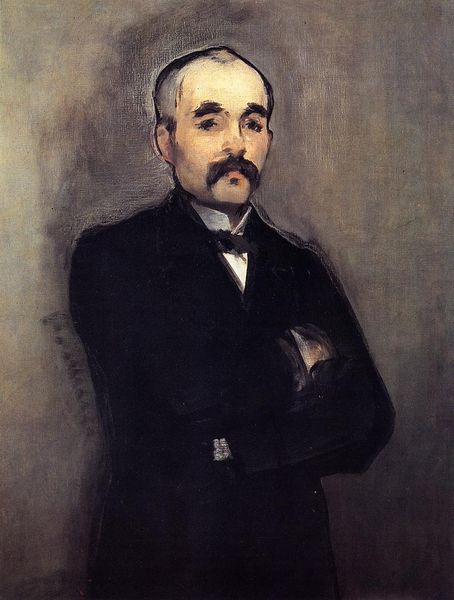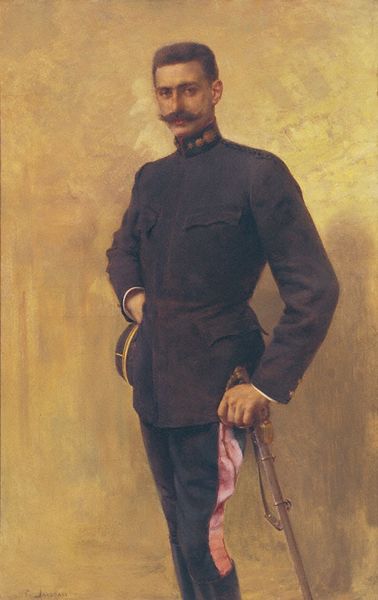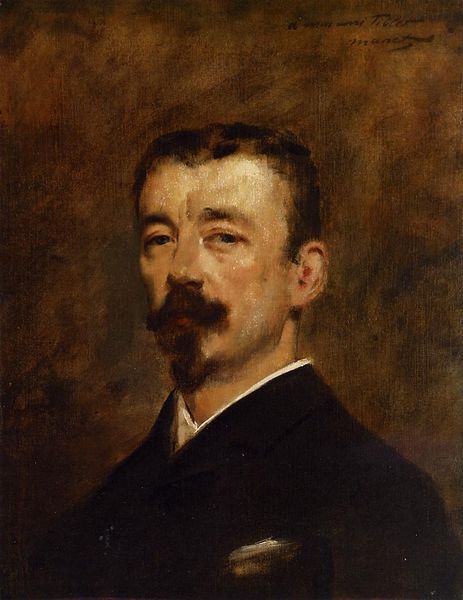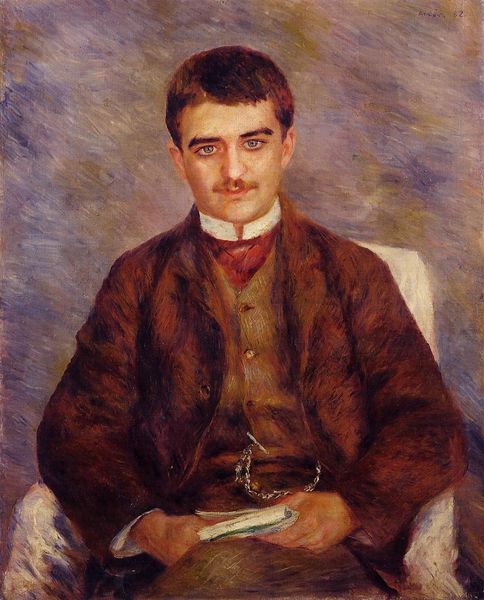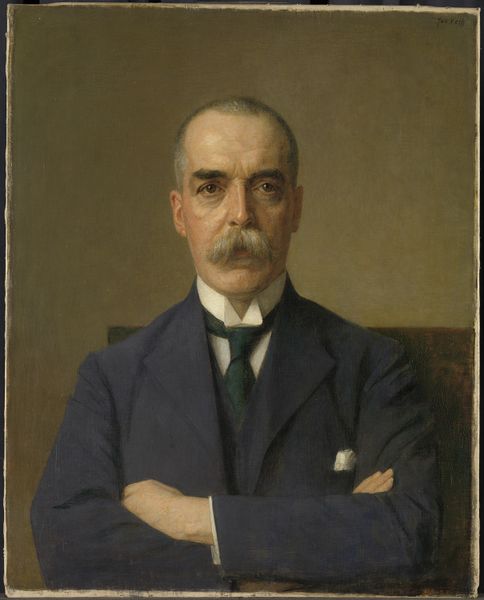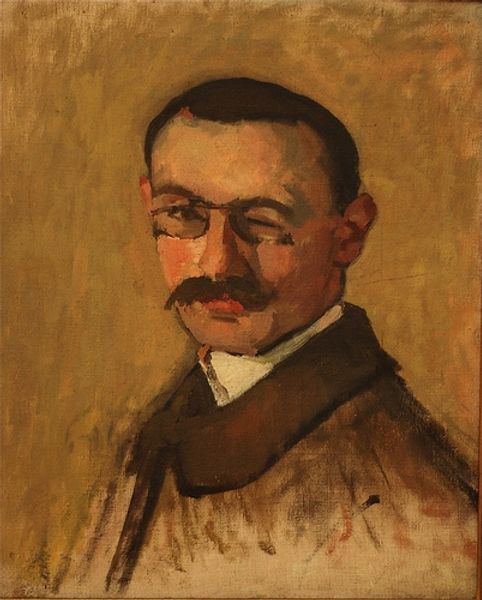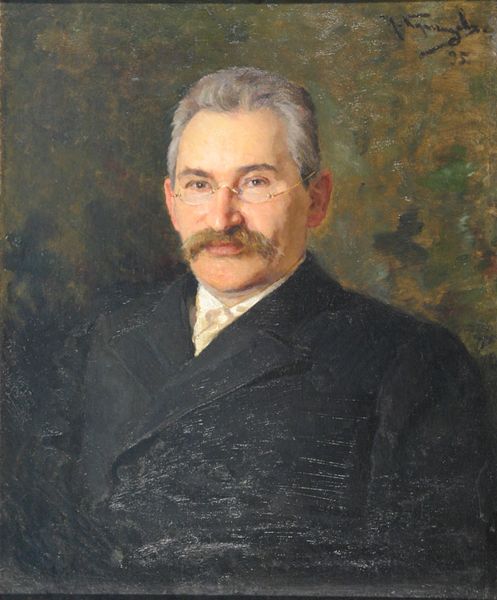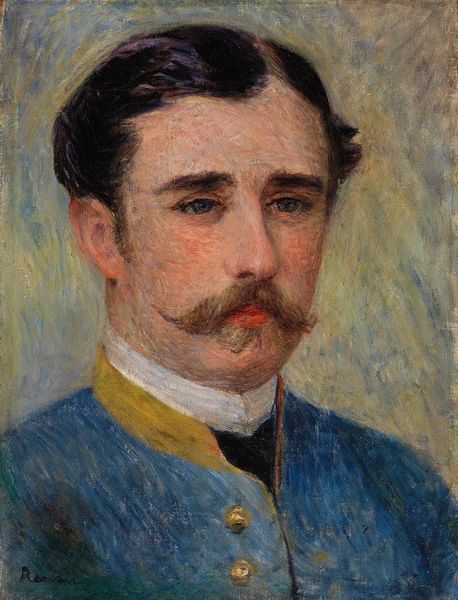
oil-paint
#
portrait image
#
arts-&-crafts-movement
#
oil-paint
#
portrait reference
#
portrait head and shoulder
#
animal drawing portrait
#
portrait drawing
#
facial portrait
#
academic-art
#
portrait art
#
fine art portrait
#
realism
#
celebrity portrait
#
digital portrait
Copyright: Public domain
John Collier painted this portrait of Rudyard Kipling in 1891 with oils. Notice the subject’s attire: the high-necked, light-colored jacket, fastened not with buttons but with toggles, hinting at Eastern styles of dress. Kipling, born in Bombay, was deeply influenced by his experiences in British India. He wears what might be called a Nehru jacket today, but we can trace its roots back further, to ancient Mandarin robes. This sartorial choice is not merely fashion; it represents a cultural exchange, and Kipling himself becomes a symbol of the East meeting West. Consider how these garments appear throughout history, shifting in meaning from indicators of status to statements of cultural fusion. These visual echoes remind us that cultural symbols evolve, yet remain tethered to their origins in ways that resonate across time. The unconscious yearning for cross-cultural understanding may be at play here, engaging viewers on a subconscious level with the image. The cyclical progression of symbols is evident as they resurface and evolve, accumulating new meanings across various historical contexts.
Comments
No comments
Be the first to comment and join the conversation on the ultimate creative platform.
